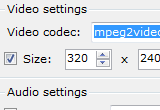

Since the video compression brings lots of redundant information to frames, the proposed frame-level stream gradually prunes the network to prevent the model from fitting the compression noise. In this paper, we propose a two-stream method by analyzing the frame-level and temporality-level of compressed Deepfake videos. Therefore, how to identify compressed Deepfake videos becomes a fundamental issue. In fact, compressed videos are common in social networks, such as videos from Instagram, Wechat, and Tiktok. Though forensically detection in high-definition video datasets has achieved remarkable results, the forensics of compressed videos is worth further exploring. These videos are easily synthesized without leaving obvious traces of manipulation. The development of technologies that can generate Deepfake videos is expanding rapidly. Playing the file in the player we developed is fluent, all played properly, and the purpose of digital content protection is achieved.

Other players either can't open the Encrypted video files, or the image is a mosaic and blurred image. Experiments have proved that encrypting the packets of key frames to protect the digital content of video is available. The protection works by encrypting the packets of key frames. In order to solve the problem, we probe into a new way that is to design a digital rights management (DRM) system based on FFmpeg, the system offers a reproducible and reliable alternative for digital rights management and related applications on the Internet. Encryption and watermarking are the most common techniques used to protect copyrighted multimedia content, but both have some limitations. The explosive growth of multimedia content on the internet is revolutionizing the way of content distribution and presenting new challenges to content security and copyright management.


 0 kommentar(er)
0 kommentar(er)
